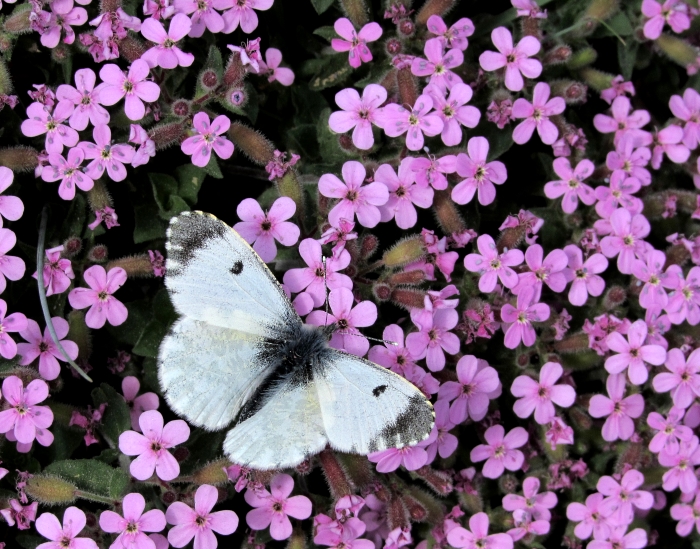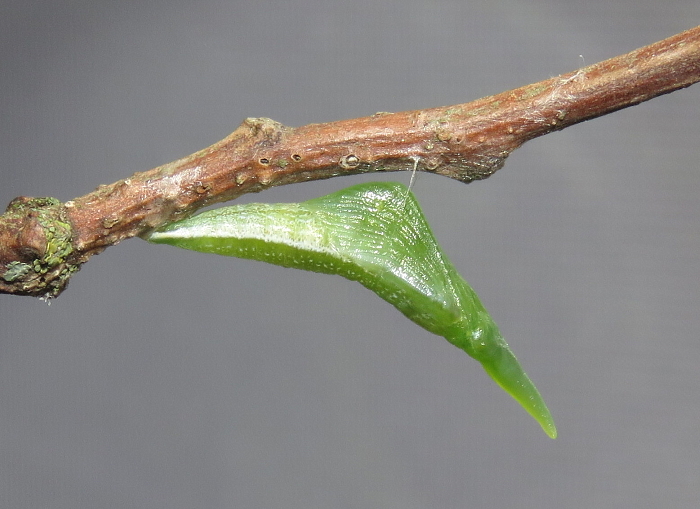Refresh page if pictures don't load fully:

Male, Switzerland, May 2013, with a wood white

Female, Switzerland, June 2013

Male, Switzerland, April 2018

Female, Switzerland, April 2018

Female, Suffolk, UK, May 2019

Male, Suffolk, UK, April 2019

Female rejecting male, April 2017

Female, Switzerland, April 2017

Male, Switzerland, April 2018

Male, Switzerland, April 2017

The same male, Switzerland, April 2017

Female, Switzerland, April 2013

Male, Switzerland, May 2013

Female, Suffolk, UK, April 2007

Female, Suffolk, UK, April 2007

Male, Switzerland, July 2016

Male, May 2006

Female, May 2006

Female, May 2006

Aberrant male, lacking black markings, Switzerland, July 2013

Newly laid egg - greenish white - Suffolk, UK, April 2020

The eggs turn orange after a while

Suffolk, UK, April 2020

Newly hatched larva, Suffolk, UK, May 2019

First instar larva, Suffolk, UK, May 2019

Older 1st instar larva, Suffolk, UK, May 2019

2nd instar larva, Suffolk, UK, May 2019

4th instar larva, Suffolk, UK, May 2020

5th instar larva, Suffolk, UK, May 2020

5th instar larva, Suffolk, UK, June 2020

Larva fully silked-up, prior to pupation, Suffolk, UK, June 2020

Larva on morning of pupation, Suffolk, UK, June 2020

Halfway through shedding the larval skin, Suffolk, UK, June 2020

Larval skin shed, Suffolk, UK, June 2020

Freshly formed pupa, Suffolk, UK, June 2020

The same pupa, some days later

Distribution
The orange tip is the spring butterfly par excellence.
As the hedgerows burst into flower, so these delicate and beautiful
insects begin to flit along them, occasionally resting on garlic
mustard or other plants to feed briefly before moving on. At low
altitudes, the last individuals may be seen in June but in the
mountains, where they emerge a little later, fresh males are still
flying in July.
The males are unmistakeable, even at a distance, with their brilliant orange tips. All other male orange tips of the genus Anthocharis have at least some bright or dullish yellow on the wings.In the far south of Spain the desert orange tip, Colotis evagore, flies. This lacks the green marbling beneath. Also in Spain the very local sooty orange tip, Zegris meridionalis may be found. This is generally much duller, with a more subdued, marbled green on yellow underside.Female orange tips, though superficially like other whites, are also easily distinguished if the distinctive mottled underside is seen. The upperside pattern is sufficiently different, too, for ready identification given a good view.
Orange tips lay their eggs principally on garlic mustard or cuckoo flower, though other crucifers may be used too. The caterpillars feed in the flower and then seed heads, before pupating on stems, where they uncannily resemble thorns. They hibernate as pupae, ready to emerge fresh and joyous in the spring.
The males are unmistakeable, even at a distance, with their brilliant orange tips. All other male orange tips of the genus Anthocharis have at least some bright or dullish yellow on the wings.In the far south of Spain the desert orange tip, Colotis evagore, flies. This lacks the green marbling beneath. Also in Spain the very local sooty orange tip, Zegris meridionalis may be found. This is generally much duller, with a more subdued, marbled green on yellow underside.Female orange tips, though superficially like other whites, are also easily distinguished if the distinctive mottled underside is seen. The upperside pattern is sufficiently different, too, for ready identification given a good view.
Orange tips lay their eggs principally on garlic mustard or cuckoo flower, though other crucifers may be used too. The caterpillars feed in the flower and then seed heads, before pupating on stems, where they uncannily resemble thorns. They hibernate as pupae, ready to emerge fresh and joyous in the spring.